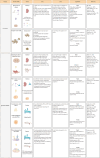In Vitro Models of Amyotrophic Lateral Sclerosis
- PMID: 37870685
- PMCID: PMC11407737
- DOI: 10.1007/s10571-023-01423-8
In Vitro Models of Amyotrophic Lateral Sclerosis
Abstract
Amyotrophic Lateral Sclerosis (ALS) is one of the commonest neurodegenerative diseases of adult-onset, which is characterized by the progressive death of motor neurons in the cerebral cortex, brain stem and spinal cord. The dysfunction and death of motor neurons lead to the progressive muscle weakness, atrophy, fasciculations, spasticity and ultimately the whole paralysis of body. Despite the identification of several genetic mutations associated with the pathogenesis of ALS, including mutations in chromosome 9 open reading frame 72 leading to the abnormal expansion of GGGGCC repeat sequence, TAR DNA-binding protein 43, fused in sarcoma/translocated in liposarcoma, copper/zinc superoxide dismutase 1 (SOD1) and TANK-binding kinase 1, the exact mechanisms underlying the specific degeneration of motor neurons that causes ALS remain incompletely understood. At present, since the transgenic model expressed SOD1 mutants was established, multiple in vitro models of ALS have been developed for studying the pathology, pathophysiology and pathogenesis of ALS as well as searching the effective neurotherapeutics. This review reviewed the details of present established in vitro models used in studying the pathology, pathophysiology and pathogenesis of ALS. Meanwhile, we also discussed the advantages, disadvantages, cost and availability of each models.
Keywords: Amyotrophic lateral sclerosis; In vitro model; Induced pluripotent stem cells; NCS-34; Neural precursor cells; Xenopus oocyte.
© 2023. The Author(s), under exclusive licence to Springer Science+Business Media, LLC, part of Springer Nature.
Conflict of interest statement
The authors declare no conflict of interest.
Figures



References
-
- Arjmand B, Kokabi-Hamidpour S, Aghayan HR et al (2023) Stem cell-based modeling protocol for Parkinson’s disease. Methods Mol Biol. 10.1007/7651_2022_473 - PubMed
Publication types
MeSH terms
Substances
Grants and funding
LinkOut - more resources
Full Text Sources
Medical
Miscellaneous

